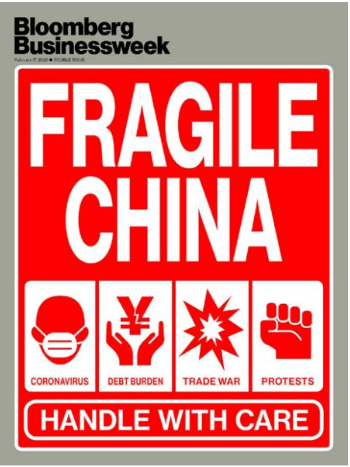To Buy or Not to Buy?
“We’re terrified that Chinese cars will flood into south-east Asian markets.” -An anonymous senior Japanese automaker executive, as reported in the June 5th, 2024 Financial Times.
“...what Russia-China… are trying to do is basically force the United States to come to the table to agree on a deal on specifically Ukraine. And in my judgment, the White House position is, they want a deal on Ukraine but they don’t want to announce it until right before the presidential election, for obvious reasons. Because Americans will forget.” -Pippa Malmgren, one of America’s foremost geopolitical experts.
For contrarian investors, which obviously includes yours truly, the most pressing investment question today might be whether Chinese stocks are at a multi-generational buy point. Cover stories such as the ones seen above, especially from The Economist, are nearly fail-safe long-term buy signals. However, it’s merely being factual to state that China’s stock market has performed miserably since early 2021 having been, well, halved.
While I think most in the West are aware of China’s recent stock market struggles, many may be unaware of how abysmally its market has performed going all the way back to 1993. As you can see in the below chart, even including dividends the MSCI China index is barely positive on an annual return basis. Cumulatively, it is up a mere 24%. This is compared to almost 2200% for the S&P 500 and roughly 600% for non-interest bearing, or dividend-paying, gold.
The fact that this period mostly represented extraordinary Chinese economic growth, until recent years, renders it almost incomprehensible. Similarly, the fact that Apple, Microsoft and Nvidia alone are worth more than the entire Chinese stock market – over nine trillion versus 7.8 trillion – is another jaw-dropper.
Chart of the MSCI (Morgan Stanley China vs the S&P and Gold
Underscoring the degree of undervaluation, the Hong Kong Stock exchange, on which many of its strongest companies are listed, hit a Cyclically Adjusted P/E (CAPE) of just 10 earlier this year. That is a level at which major bottoms have occurred for a host of stock markets, including the U.S. in 1974 and 1982.
Additionally, many top Chinese companies are sitting on sizable, often massive, cash balances. Backing cash reserves out of their market capitalization makes the valuations even more mouth-watering.








